Going out of town can be stressful for aquarium owners. Some basic issues are feeding, water top-off, dosing, and monitoring water quality. Having an aquarium sitter look after your aquarium is one solution. But, unless your aquarium sitter is an aquarist, there is a good chance they will over-feed, be unable to notice problems as they arise, and not know what to do in most situations. Fortunately, there are several strategies that will make being away from your aquarium less stressful.
1. AUTOMATE AS MUCH AS YOU CAN
FEEDING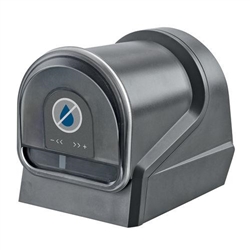
With saltwater aquariums and tanks with larger fish that require more protein, we recommend using an
automatic fish feeder. Fish feeders are simply food holders that turn and open a door to drop food into the aquarium at specified times.
The
Lifegard Aquatics Intelli-Feed Aquarium Fish Feeder (NEW USB VERSION) features USB charging and silent operation. It holds up to 200 ml of food, is easy to refill, and can feed up to four times a day if necessary. 3 doses per feed.
The
OASE FishGuard Automatic Fish Feeder is easily adjustable and can supply your fish up to four times daily with a maximum of 3 doses per feed. This battery-powered unit has an easy-to-read LCD display.
The
Hydor Automatic Feeder For Aquariums feeds up to 3 times a day. It comes with an airline input for an optional air pump to help keep the food from getting moist and rotting. Battery operated.
For dosing small grain food, get the
Sera X-Feeder Fish Feeder along with the
Sera X-Feeder Fish Feeder Screw, Xtra Fine.
When using a fish feeder, pellets are better than flake foods if the food is in the feeder for more than a few days. Flake foods can easily absorb the moisture from the aquarium and become a mess in the feeder.
New Life Spectrum pellet foods are a great choice for all feeders. They come in a variety of pellet sizes and for a variety of fish types.
LIGHT CONTROLLERS
These days itís pretty common to have an LED light with a built-in timer, or a controller made specifically for your light. For those without a dedicated light timer, you can use a
Coralife Digital Power Center Timer to turn your lights on and off. There are eight outlets, and some can be used for turning off powerheads during feeding, which will keep the food from flowing into the filter and polluting the water. It can also be used to turn on a night light or other night equipment (e.g. algae scrubber or refugium light) when the light turns off.
ATOs (AUTO TOP-OFFS)
Evaporation is inevitable. For saltwater aquariums, itís extremely important to have constant top-off because if your salinity gets high due to evaporation it can really stress out fish and coral. Adding too much at a time can also stress out the livestock.
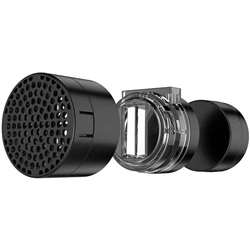
When out of town you could have an aquarium-sitter top off your aquarium water. Or, you could use an ATO (Auto Top Off). An ATO has a sensor at the preferred water height and a pump in a reservoir that pumps water into your aquarium.
An ATO is a great solution because it adds small amounts of water throughout the day. We carry the
IceCap ATO EZ System,
JBJ ATO,
Hydor Smart Level Control, and AquaticLife auto top-offs. The
AquaticLife Barrel Buddie Smart Water Level Sensor is the most trusted because it turns off after 5 minutes of filling to prevent overflow. Unlike other top-offs, the Osmolator is not affected by debris, light, or magnetic fields.
Even if you never take a vacation, ATOs are recommended. Adding water slowly throughout the day is a best practice. And, keep in mind, if enough water evaporates and your pump runs dry, it could start a fire.
DOSING
Dosing is obviously critical. Letting your calcium and alkalinity get low when out of town can be disastrous. There are three choices for dosing when youíre out of town. You can have your aquarium sitter do it, you can use a
dosing pump, or you can use a dosing block. Unless your aquarium sitter is an aquarist, you probably donít want them dosing your aquarium.
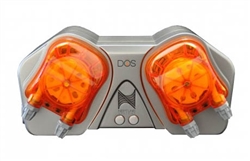
A dosing block is the simplest choice.
Sea-Lab #28 blocks are filled with the necessary minerals and trace elements for saltwater aquariums. The block slowly disintegratesóreleasing the proper amount of elements needed. The blocks will not overdose.
Dosing pumps are more exact than blocks and will slowly dose exactly what you want in the desired amounts.
Neptune,
Kamoer, and
Milwaukee have dosers that can be set to add specific amounts of any desired additive. For those on a budget who only need to dose from one source, the
Kamoer F1 Liquid Dosing Pump is a great choice. Dosing pumps can also dose freshwater additives such as Seachem Flourish, Seachem Advance, and Seachem Excel.
TOTAL CONTROL
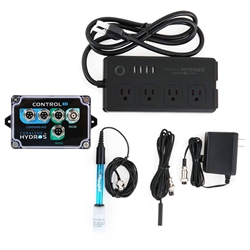
You can have a feeder, light timer, ATO, and doser and still not have real peace of mind. If your aquarium investment is in the thousands perhaps itís time for the next leveló
Hydros Control or the
Neptune System Apex.
Apex Controllers can control any single pump, light, reactor, chiller, heater, or doser remotely through your phone (and WiFi at the source). They have probes for measuring pH, salinity, temperature, and ORP. You can also have notifications sent to your phone if a pump has stopped working or a leak is present.
Hydros Control is another great option. Consider the
Hydros Control X3 Starter Pack: Aquarium monitoring AND
security system w/ 4-Outlet Power Strip
Hydros Control X3 Starter Pack Capabilities:
1.
pH. The
Hydros Control X3 Starter Pack detects when the pH is out of range. With the Starter Pack, you could turn off a Calcium Reactor or Dosing Pump remotely to get the pH back in range.
2.
Temperature. The
Hydros Control X3 Starter Pack detects when the temperature is out of range. With the Starter Pack, you could remotely turn off a malfunctioning heater or chiller to help get the temperature back in range.
3.
Leaks. You could get a
Point Leak Sensor along with a Starter Pack to have the ability to detect a leak and control equipment.
For more information about the Hydros Control products, please visit our
Hydros Page or watch the
Hydros YouTube Videos.
POWER OUTAGES
Power outages caused by bad weather, car accidents, tripped breakers, or simply poor wiring, can kill all the animals in your tank in a matter of hours. What if youíre on vacation when there is a power outage? Please read our ď
Preparing Your Aquarium For A Power OutageĒ article on this subject.
The article discusses backup batteries and air pumps.
REDUNDANCY
What if a
heater or
pump fails while on vacation? Think about redundancy.
Using more than one heater is advisable because heaters can fail, and having a backup heater will keep your tank temperature from fluctuating wildly if one heater fails. Heater failure can either be one heater not turning off or one heater not turning on. Both are a problem, but usually a heater not turning off is a bigger problem, as it results in the tank overheating. If you have two 100W heaters, and one does not turn off, then the other should not turn on and your tank should not overheat. If, on the other hand, you just had one 200W heater and it didn't turn off, that could spell disaster.
All aquariums should also have multiple pumps. All pumps will eventually fail, and it may happen when youíre on vacation. Using multiple circulation pumps to create wave action is a good practice. If you have a main system return pump, using additional circulation pumps is also a good practice and will give you redundancy if one pump fails.
All these arguments for redundancy while on vacation also apply to when youíre not on vacation. Pump and heater failure can do damage in just a couple of hours.
2. HAVE SOMEONE ON CALLIf you are gone for any extended period of time, it is good to have someone on call in case of an emergency. You can hire a general house sitter but it is often good to have an aquarium keeper friend or a local aquarium service tech on call. With some more complicated aquariums, you might need someone to feed frozen fish food or clean the protein skimmer cup once while you are gone. Even if nothing goes wrong it is good to have someone to call just in case. It is often ideal if you can work out a tank-sitting swap with another aquarium keeper. You can each be on call when the other is away.
3. LABEL ALL OF YOUR GEARYou might know what all of your gear is and where it is, but to a non-aquarist the inside of your aquarium cabinet just looks like a science experiment. Using a label maker to help a non-aquarist identify the filter, UV Sterilizer, ATO reservoir, ect. is very helpful in an emergency when you are trying to give instructions over the phone from far away. It is also good to label the receptacles on your power strips so that anyone can quickly find out what cord they need to unplug to turn something off.
4. MAKE SURE EQUIPMENT IS WORKING
Making sure that your light screens are clean, pumps are clean, plumbing isnít clogged, filter media is fresh, dosing lines arenít clogged, UV bulbs are still working, probes are calibrated, sensors are cleaned, ect., will help to make sure nothing goes wrong when you are away. If something is going to stop working you donít want it to happen while you arenít there. Staying on top of regular equipment maintenance will help to prevent failures while you are away.
5. MAKE NO CHANGES RIGHT BEFORE YOU LEAVEA common mistake is cleaning everything the night before leaving on a long trip. There is nothing wrong with cleaning, but sometimes you might not screw the reactor lid shut all the way or you accidentally bump a probe out of the water, or you forget to plug something back in. When you are home you notice your mistakes but when you leave these mistakes can go unnoticed for a long time and cause real problems. We suggest doing your preparatory maintenance at least 24 hours before you leave so you can be sure that everything is running correctly.
In addition to doing no last-minute maintenance, we suggest adding no new fish or corals, or adding any new equipment. You donít want a disease outbreak or aggression battle to start when you are away and you want to ensure that the equipment is a good fit for your tank before you walk away for a prolonged time. If you want to add automation to the tank such as an auto feeder or ATO we suggest setting these up a week before so that you can confirm that they are functioning properly. Miss-adjusting an auto feeder so it feeds a little too much can mean returning to a really messy and dirty tank after your trip.




























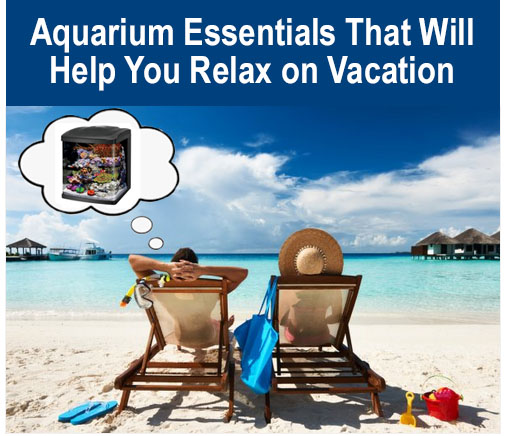
 With saltwater aquariums and tanks with larger fish that require more protein, we recommend using an
With saltwater aquariums and tanks with larger fish that require more protein, we recommend using an 
 A dosing block is the simplest choice.
A dosing block is the simplest choice.  You can have a feeder, light timer, ATO, and doser and still not have real peace of mind. If your aquarium investment is in the thousands perhaps itís time for the next leveló
You can have a feeder, light timer, ATO, and doser and still not have real peace of mind. If your aquarium investment is in the thousands perhaps itís time for the next leveló